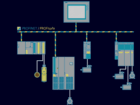Integrated drive safety is about protecting people and investments
Siemens not only has drives for each power and performance level, but also include safety functionality seamlessly integrated across the portfolio. Whether hardwired into an existing system or linked via PROFIsafe to SIMATIC or SINUMERIK controls, SINAMICS safety provdes the latest safety concepts while reducing commissioning time, hardware and wiring costs.

Siemens not only has drives for each power and performance level, but also include safety functionality seamlessly integrated across the portfolio. Whether hardwired into an existing system or linked via PROFIsafe to SIMATIC or SINUMERIK controls, SINAMICS safety provdes the latest safety concepts while reducing commissioning time, hardware and wiring costs.